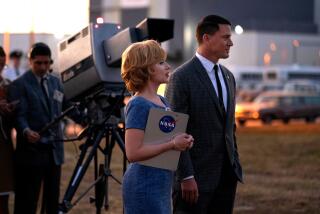Stumbling Around in Space
- Share via
The wizards of “Star Wars” made $250 million disappear into thin air this week. It is hard to say what they learned from the stunt. But for Congress and the rest of us the lessons seem pretty clear.
Congress must step in now and demand to know the precise mission of the Star Wars program before it gets any more money. Americans should insist that the next President strip down the program to a long-term scientific research project, operating under negotiated guidelines that would cover both American and Soviet efforts to design defenses against nuclear missiles.
President Reagan launched the project nearly five years ago in a speech that asked whether American scientists could design a defensive shield over the United States that would make nuclear missiles “impotent and obsolete.” Billions of dollars and dozens of flashy but scientifically not very useful stunts later, there still is no answer to the question. What does seem obvious after all that effort is that it will take decades to build such a shield, if it can be done at all. It also is apparent that on such a time frame the Star Wars project cannot be allowed to block efforts to make missiles obsolete by destroying them under arms-control agreements. Yet that is exactly what is happening in Geneva today because of Reagan’s refusal to bargain on the terms of defense research.
The most recent stunt started Monday when an Air Force Delta rocket roared into space. The Pentagon said that the rocket carried mock missiles and detection equipment designed to locate and track them once they were turned loose in space. One report, unconfirmed, said that part of the test involved determining whether the sensors could tell the difference between real missiles and decoys.
The Air Force handed out cassettes of film with animated drawings of what it said would be happening in space during 12 hours of testing. The next day the Air Force said that everything had gone just fine.
The cost of the launch, timed to coincide with the opening of the budget cycle on Capitol Hill, seems a very high price to pay for the failure of nerve among Reagan’s aides that prevents them from so much as hinting to the boss that the only real progress that Star Wars has made is on trips back to the drawing board.
If Star Wars is ever to provide the shield against missile attack that the President yearns for, it will happen decades from now and be based on fundamental research, not the kind of stunt flying that the Pentagon said it performed Monday.
There is enough basic research to keep physicists busy for years trying to determine what a missile defense would look like if it could be built at all, and making certain that Soviet scientists do not stumble onto the right combination, if one exists, before Americans do.
Other factors, seldom mentioned by the Pentagon, give all this activity the look of a program that is out of control. One factor is that if Star Wars were put on a more sensible research schedule that would cost less and waste less, thousands of the very missiles that the system would presumably shoot down could be negotiated out of existence.
Negotiators for the United States and the Soviet Union have proposals before them that would eliminate half the long-range nuclear missiles in each nation. Before either nation would agree to reductions of that magnitude, however, it would want assurances that the other would not suddenly appear with a workable defense system. Both countries could get such assurances by tightening up and extending the 1972 anti-ballistic-missile treaty that limits development and testing of missile defenses. If the United States and the Soviet Union cut missiles and signed a new treaty on missile defenses, the defenses--if they were still felt to be necessary--would be easier to design because they would need to block the flight of fewer missiles.
The other point that the Pentagon did not call attention to this week is that no matter how pleased it may be about the test results, measured against the rigid standard that governs the concept of missile defenses, the mission was a failure. As opponents of Star Wars have said over and over, it is a system that must work perfectly the instant it is needed if it is to make nuclear missiles impotent. Monday’s test started four days late. The rocket didn’t work the first time.
More to Read
Sign up for Essential California
The most important California stories and recommendations in your inbox every morning.
You may occasionally receive promotional content from the Los Angeles Times.












